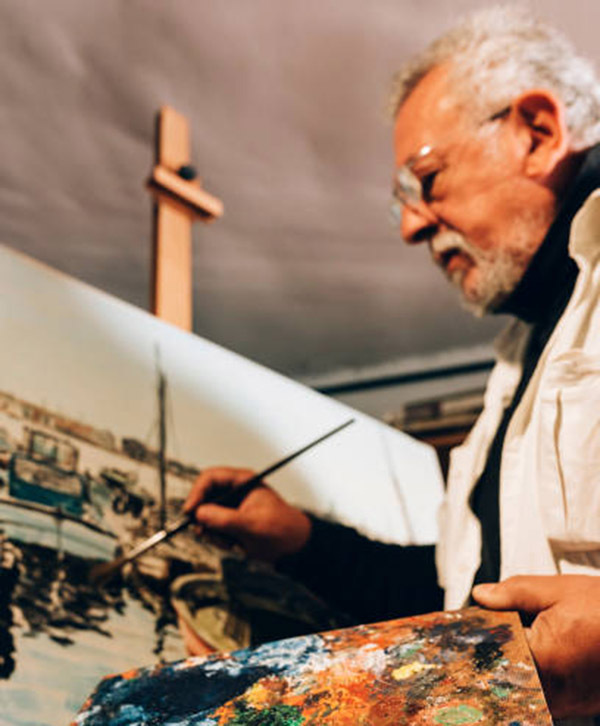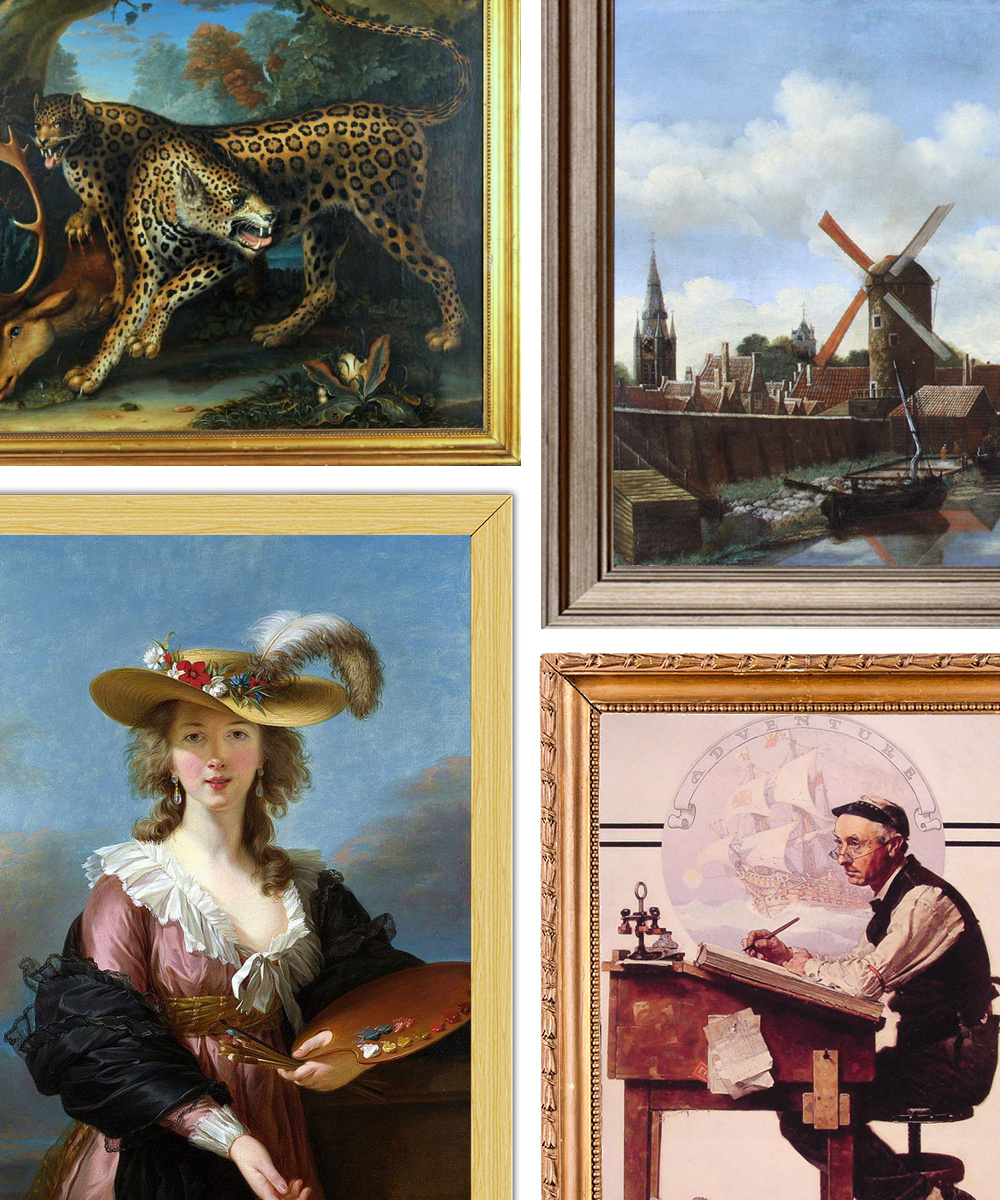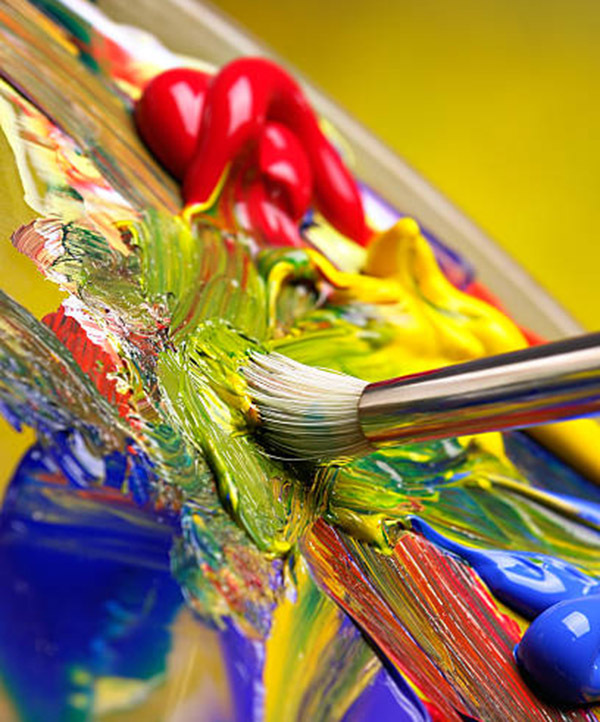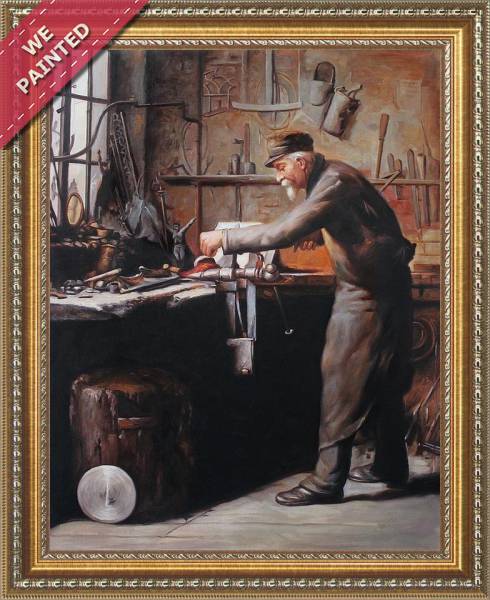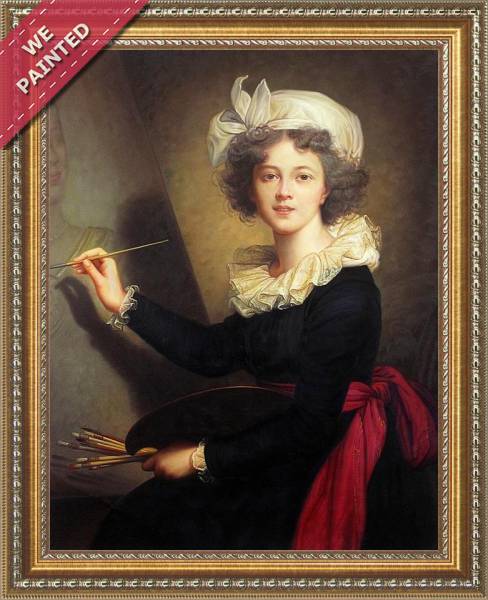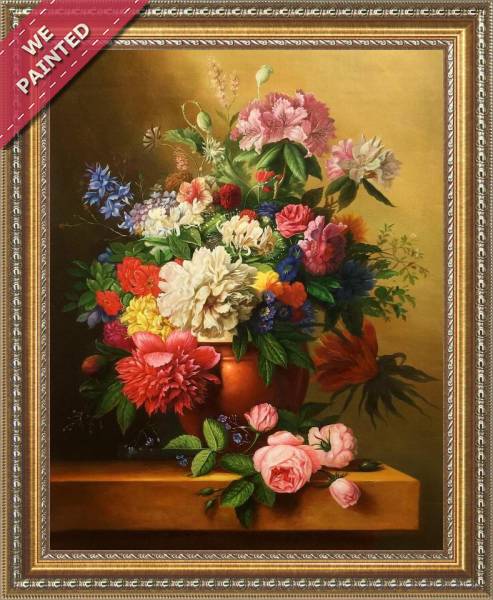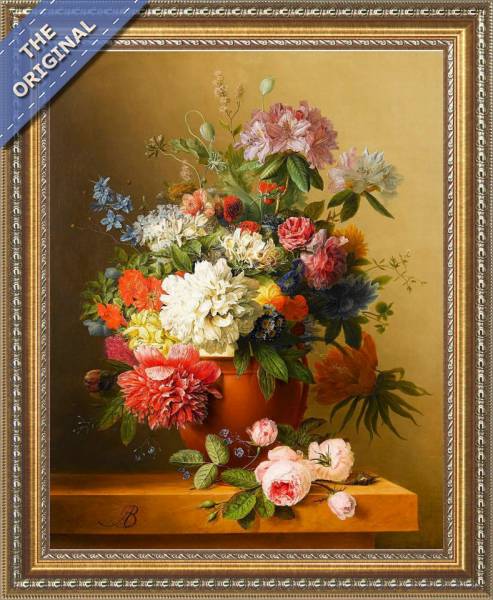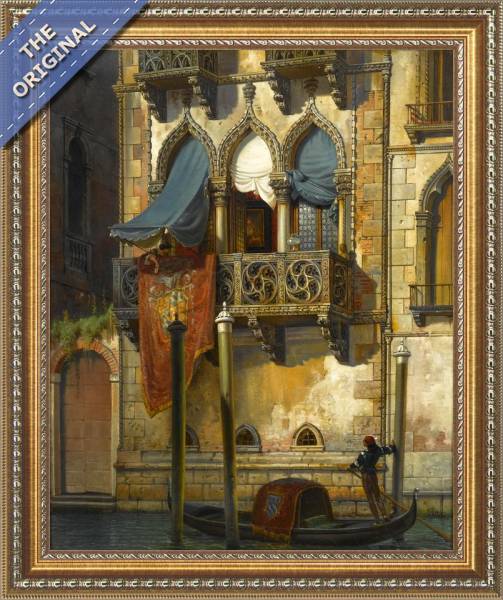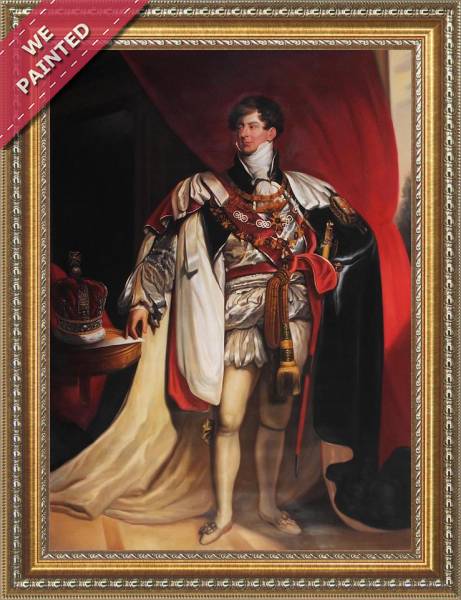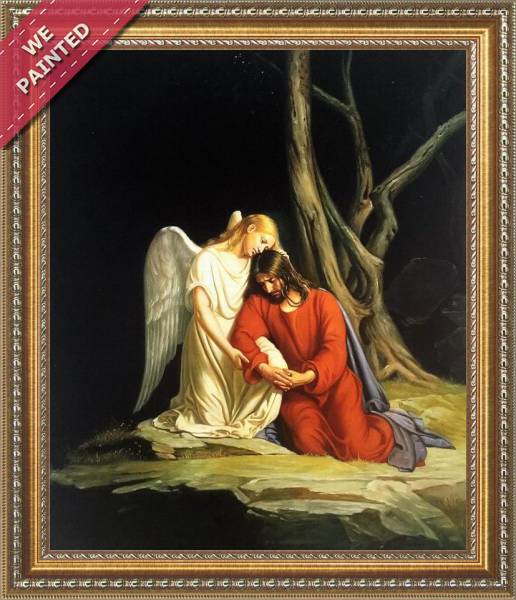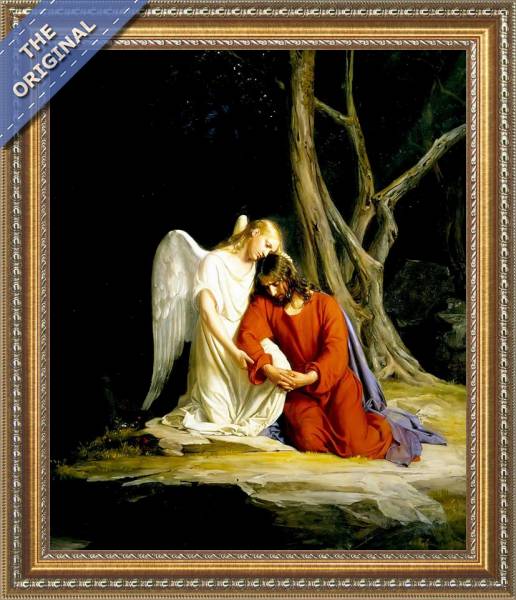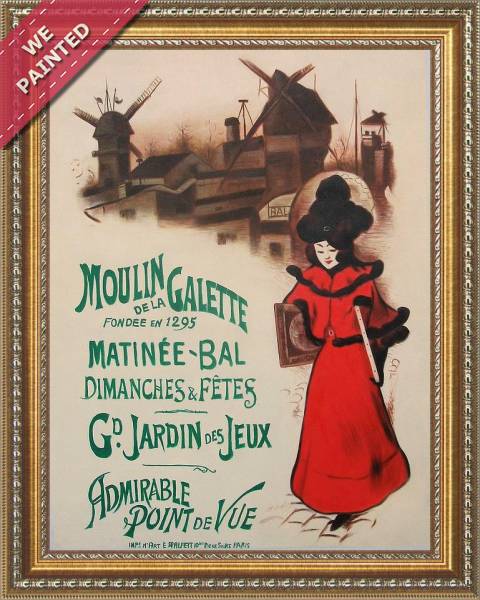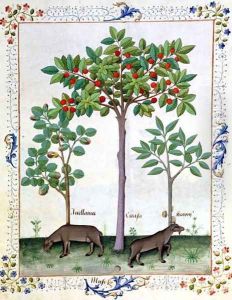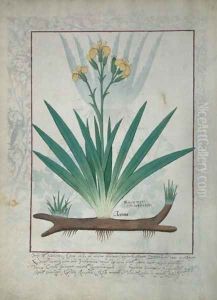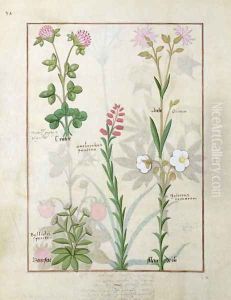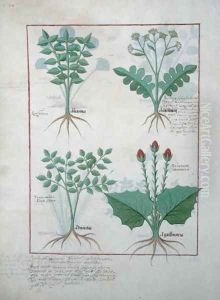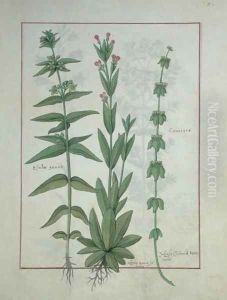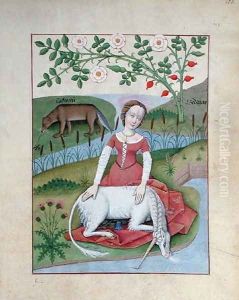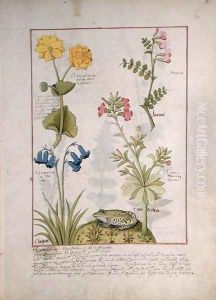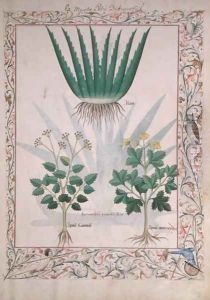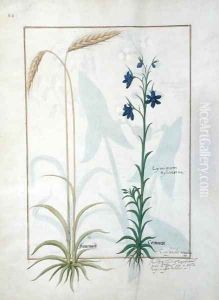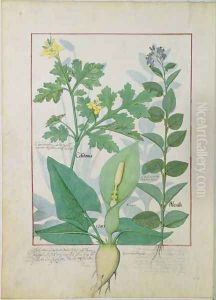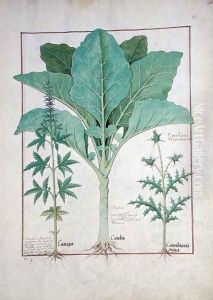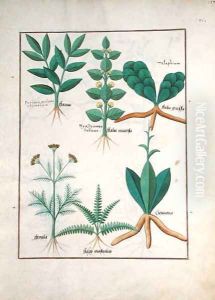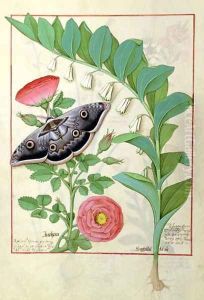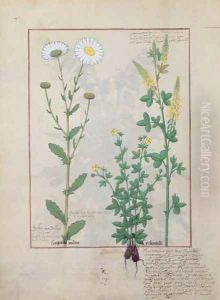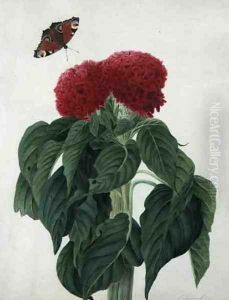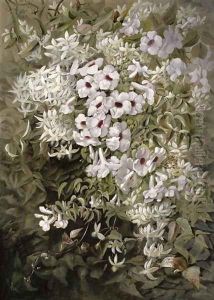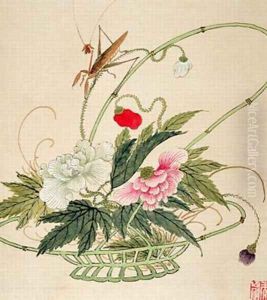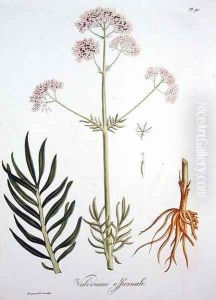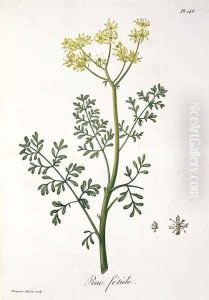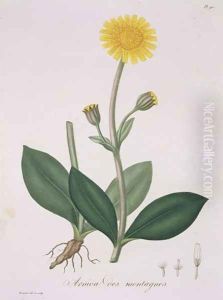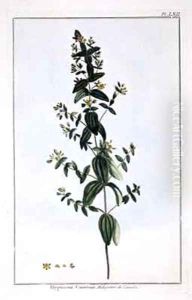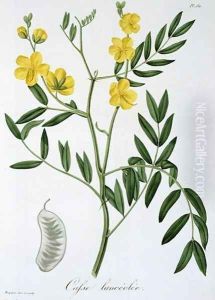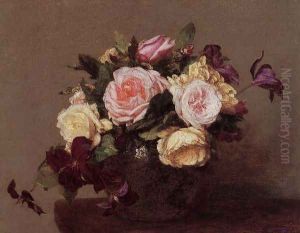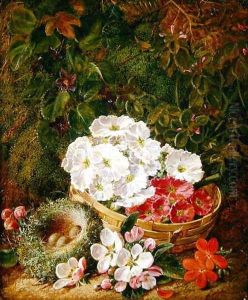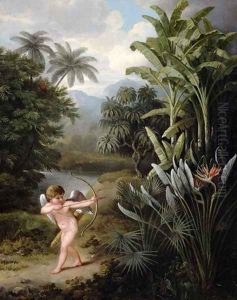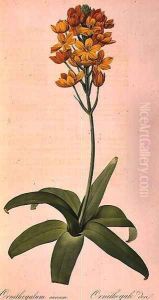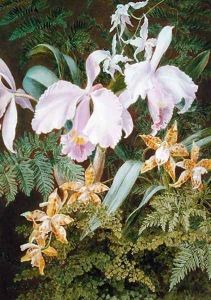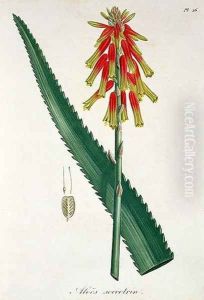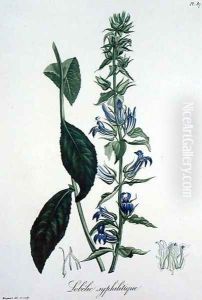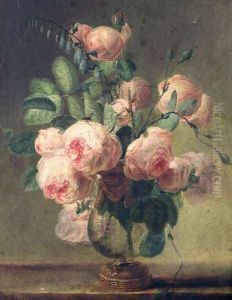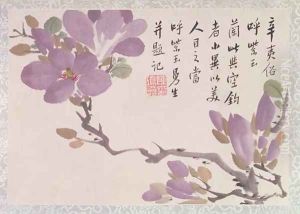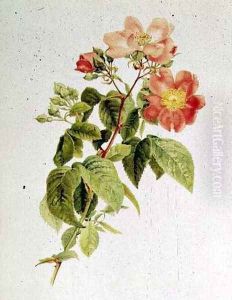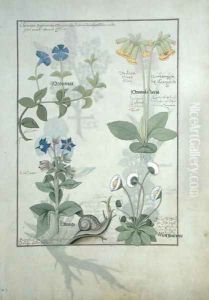





Top row- Blue Clematis or Crowfoot and Primula. Bottom row- Borage or Forget-me-not and Marguerita Daisy, illustration from The Book of Simple Medicines by Matthaeus Platearius d.c.1161 c.1470
-
About Reproduction
Bring the timeless beauty of Robinet Testard's Top row- Blue Clematis or Crowfoot and Primula. Bottom row- Borage or Forget-me-not and Marguerita Daisy, illustration from The Book of Simple Medicines by Matthaeus Platearius d.c.1161 c.1470 into your home with a handmade oil painting reproduction. Carefully recreated on canvas by skilled artists using traditional techniques, this piece captures the delicate brushwork, subtle light, and vibrant color of the original masterpiece. With museum-level quality and rich texture, it brings elegance and artistic depth to any space. Enjoy free shipping and make this masterpiece a part of your personal collection.
-
Original Description
This exquisite botanical illustration from The Book of Simple Medicines captivates with its delicate balance of scientific precision and medieval charm. Created around 1470 by Robinet Testard, one of the finest illuminators of the French Renaissance, it depicts four plants—Blue Clematis (or Crowfoot) and Primula on top, Borage (or Forget-me-not) and Marguerita Daisy below—with remarkable detail against a luminous gold-ground backdrop. As part of Matthaeus Platearius' 12th-century herbal manuscript, revived during the 15th century, the work exemplifies transitional Medieval-to-Renaissance styles: the flattened perspective and decorative patterning nod to Gothic traditions, while the lifelike rendering of veins and petals heralds the scientific curiosity of the Early Renaissance. Testard's mastery shines through the vibrant lapis lazuli blues and leafy greens, framed by whimsical tendrils that blur medicinal documentation with aristocratic ornamentation. Such illuminated herbals occupy a pivotal position in art history as precursors to both modern botanical illustration and anatomical studies, bridging devotional manuscript art with empirical observation.
For interiors, this artwork’s timeless elegance lends itself to both traditional and eclectic spaces. A framed giclée print (sized 16"x20" or larger) would anchor a study or sunroom with scholarly charm, its gold accents harmonizing with brass fixtures or warm wood tones. The deep blues and greens create natural pairings with terracotta pots, velvet upholstery, or sage-colored walls in a cottage-core aesthetic. For contemporary offices, try a floating frame with anti-glare glass to modernize its antique appeal, positioning it near greenery or alongside minimalist line drawings for visual dialogue. The circular rhythm of leaves and flowers invites repetition—consider accent pillows or ceramics echoing the botanical motifs. In smaller formats (8"x10"), clustered with other herbals in mismatched frames, it cultivates a cabinet-of-curiosities vibe. Always avoid competing patterns nearby; let its intricate details command attention as a conversation piece linking nature, history, and art.
-
Lead Time & Shipping
When you order this oil painting replica, it typically takes 2-3 weeks to paint. If the artwork is more complex, it might need a little more time to ensure the best quality. Once it's ready, we'll send you a photo for your approval. After you give the green light, we'll ship it to you for free.
-
Return & Refund
We believe in the quality of our hand-painted oil painting reproductions, and your satisfaction is our priority. If for any reason, you are not completely satisfied with your purchase, we offer a 45-day return policy. You can return your artwork within 45 days of receipt and receive a full refund. Please note that the artwork must be returned in the original packaging and in the same condition as it was received.

